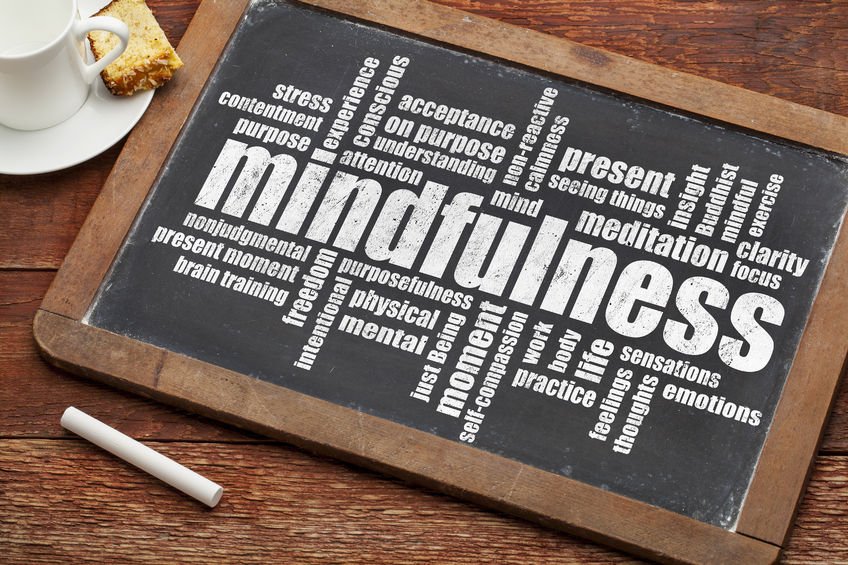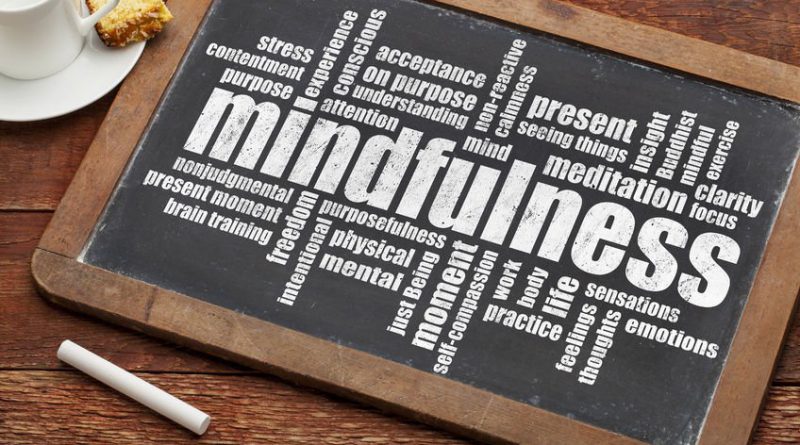The Art of Being Mindful

Vis Medicatrix Naturae
Decreasing Anxiety with Mindfulness Meditation
“Mind! Mind!” – a common warning provided by my Scottish great-grandmother to take care and become cautious – continues to be frequently used by my loved ones several decades after her death. The notion of being mindful to one's surroundings has been ingrained in the back of my mind since childhood. But creating a conscious effort to be mindful to oneself, although conceptually in place, is not always put into action. The practice of mindfulness in regards to meditation is something I strive for daily and then try to impart to my patients, specially those with high anxiety and stress, so that they may embark on their own mindfulness meditation journey.
Described as an intentional self-governance of attention, all inside the realm of moment to moment, the goal of meditation is to both calm and relax the mind and body. Meditation is taken from 2 Latin words: meditari, intending to think, exercise the mind, or dwell upon; and mederi, intending to heal.1 Meditation provides for a gentle yet effective way to deal with various conditions. These range from general health concerns to a particular conditions, particularly those related to stress.2 Additionally, meditation is believed to become only one of 3 strategies which are self-regulatory and are useful and efficacious in managing anxiety.3
Mindfulness is often referred to as the process through which a mental state is identified via nonjudgmental awareness inside the experience of the present moment. Examples include one's thoughts, consciousness, sensations, environment, and bodily states, while simultaneously encouraging curiosity, openness, and acceptance.4 Several mindfulness-based techniques come from and could be traced to one of the most ancient forms of India's meditative techniques, Vipassana meditation. Vipassana can be deconstructed into 2 words: Vi, meaning special, and passana, meaning to see in order to observe. Vipassana can be found in the Pali language; when translated into English, the Pali word Sati becomes “mindfulness.”3
Mindfulness Meditation
Achieving enhanced mindfulness can be achieved through general meditative practices. Mindfulness meditation , whose beginnings originate from Eastern contemplative practices, includes exercises like a body scan during walking or seated meditations. An appearance scan exercise involves guiding one's attention progressively with the body while focusing around the sensations within each area.5 The purpose of MM is to promote continuous and clear comprehension and understanding of ongoing objective and subjective occurrences. This awareness is then further combined with a mindset of both openness to and acceptance associated with a and all sorts of experiences that could emerge.1
While practicing MM, thoughts and feelings thought to be distracting should not be ignored, but rather recognized and accepted having a nonjudgmental attitude because they occur. This allows the individual to disassociate from them, with the goal of obtaining insight, compassion, and awareness, in addition to developing the facility for more adaptive and flexible coping mechanisms. Researchers consider that growing and developing these traits may provide people with the realization of a bigger sense and awareness of health insurance and well-being. This important process permits the mind to become “still,” that allows the mind's routine regulatory patterns to become suspended. This, in turn, increases one's understanding of the present moment.1
Originating from Buddhist tradition and practices, MM has become ever more popular in Western countries. While a dramatically increasing curiosity about both mindfulness and meditation throughout several fields has emerged during the last couple of years, using MM has focused significantly on stress, pain, depression, and anxiety.6 In MM, slow and deep breathing strategies are used. These are thought to ease distress through the balancing of sympathetic and parasympathetic responses.1
Anxiety & Mindfulness
As recently, there has been an ever-growing interest in mindfulness-based interventions, as they are cost-effective, low-stigma, and quite obtainable treatments for several psychological and medical symptoms, one being anxiety.5
Anxiety is an excessive fear and/or unwarranted fear that inhibits and interferes with a person's overall functioning. Six subtypes are found within the group of panic disorders, all of which share common components of emotional experience together with cognitive and informational processes. These are seen as a the dysregulation of physiological, behavioral, emotional, and/or cognitive processes.3 Generalized Anxiety Disorder is described as worry that's difficult to take hold of and control. Common symptomatology includes muscle tension, irritability, and poor sleep.5 Individuals with GAD chronically focus on negative events that have yet to occur, in addition to feelings of the apprehension. Worry – a hallmark of GAD – evokes an experiential evasion of anxiety, consequently inhibiting emotional processing that is essential to overcome anxiety. Persons with GAD customarily react to an ungrounded/fabricated perceived threat, instead of concentrating on the knowledge inside the present moment, which would allow for an alternative response that may permit adaptive responding. Essentially, the mechanism through which mindfulness works in anxiety is the growth and development of effective emotional regulation skills, along with a process of separating external circumstances from internal experience, that is otherwise exacerbated by worry along with other types of verbal activity.3
Another characterized type of anxiety is Social Anxiety Disorder . This is an oftentimes debilitating condition referred to as profound fear of evaluation in social and/or performance scenarios. SAD is strongly related to tremendous distress together with functional impairment concerning the work and social sphere.7 SAD patients have a significant propensity to focus on internal and external cues during the period of social situations. Types of internal cues include self-image and negative thinking, whereas external cues may include individuals' facial expressions.8
It has been found that mindfulness meditation training, when conducted as Mindfulness-Based Stress Reduction , can lessen anxiety symptoms in individuals with GAD.5 MBSR includes multiple kinds of mindfulness practice, such as formal and informal meditation practices, and hatha yoga.8 Importantly, research has shown that formal meditative training is not necessary when a person has higher trait mindfulness. Mindfulness may reduce patients' chance of developing depression and anxiety disorders.1 Furthermore, MBSR may provide help with mitigating avoidance while increasing attentional allocation in patients with SAD. This is further evidenced by a correlation between reduced SAD symptoms and increased neuronal response in brain regions related to visual attention.8 Additionally, individuals who learned MM have been discovered to cope better over the course of a laboratory stress challenge, allowing for the chance that mindfulness could instill a little bit of potential to deal with stressful psychological challenges.5
A common misconception exists regarding MM. It ought to be clear that MM isn't an action of prayer or worship. Rather, MM is taught apart and independently in the originating cultural and spiritual traditions that it began.1 Additionally, understanding important differences between MM and other alike modalities, in addition to understanding what MM is and just what it's not, is essential to appreciating its value. MM is distinct and various from relaxation. Although meditative practice can induce a comprehensive group of beneficial physiological changes, such as lowered heart, metabolic, and breathing rate, MM and it is true practice produces an energetic and intentional state of awareness. Although a relaxing state can be a consequence of MM, its purpose is not to provide that calming effect. Rather, MM instructs its participants to mitigate prolonged reactivity to negative stimuli.1
Closing Comment
My great-grandmother had it right: “Mind! Mind!” Mindfulness is indeed the easiest method to improve every aspect of our way of life, from dealing with anxiety to finding possible ways to stay healthy. It's a remarkably effective practice for both mind and body that can be used by all.

